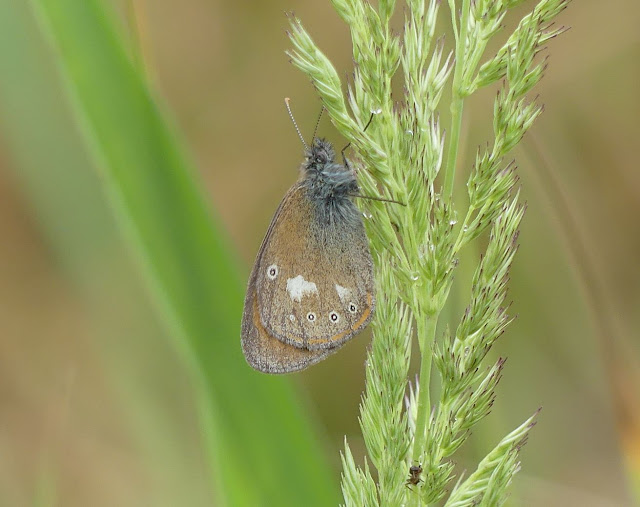I returned to Berlin last weekend and a trip there is simply not complete without me visiting the Moorlinse Buch. Since last year's visit got me my one and only Large Chequered Skipper, I was keen to see if I could find it again but the weather was terrible for butterfly activity; overcast with strong winds and the occasional light shower. I still headed to the spot I found it last year, to no avail, but was content seeing several birds we don't get in Brussels such as the breeding Red-necked Grebes, Red-backed Shrike, my first-in-Germany Corn Bunting singing, and a Tree Sparrow family with some ever-so-cute fledglings. The area is bordered to both the west and north by other nature reserves, so I decided to continue from the western one (where I found last year's lifer) to the northern one, which I'd never explored. Just when I'd given up hope on lightning striking twice, a small skipper darted across the track and landed in the the grass and I instantly knew what it was.
Exhilarated by this discovery, I continued through the rain, trusting the forecast that it would clear by mid afternoon, to an area I'd noticed had just two previous reports of another lifer butterfly for me. This one seemed even rarer and, with very few butterflies on the wing, I really didn't expect anything but nothing ventured nothing gained. Unbelievably, as soon as I got to an area I thought looked like good habitat, I spotted another small brown butterfly in flight and had a feeling it was what I was looking for. It co-operatively perched for just a few minutes before disappearing again, allowing me to get several pictures of my first Chestnut Heath!












